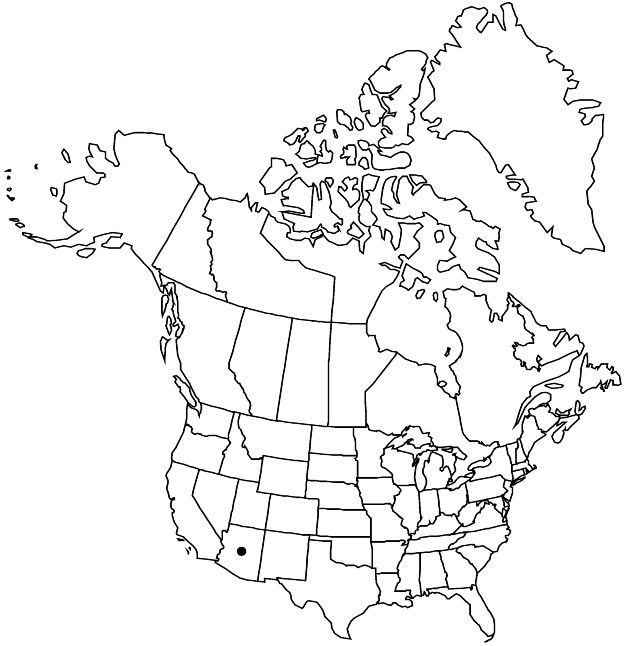Passiflora arida
J. Wash. Acad. Sci. 12: 256. 1922.
Stems terete, densely woolly-hairy. Leaves pungent, densely woolly-hairy, with obscurely glandular or eglandular bristles; stipules pectinate, 2–5 × 3–8 mm, with obscurely glandular or eglandular bristles or hairs; petiole with obscurely glandular or eglandular bristles or hairs; blade roughly symmetric, 3–6 × 2–7 cm, deeply (3–)5–7(–9)-lobed, middle lobe longer than lateral lobes, margins entire or serrate; abaxial fine veins weakly to moderately raised but obscured by pubescence, abaxial nectaries absent. Floral bracts pinnatifid, 16–28 × 14–28 mm, margins entire or dentate, with obscurely glandular or eglandular bristles or hairs. Flowers: floral tube cuplike, 3–5 mm deep; sepals white, 13–23 × 5–9 mm; petals white, 14–20 × 5–8 mm; corona filament whorls 5–6, outer 2 whorls purple to magenta basally, white medially, pale pink apically, linear, terete, 10–17 mm. Berries green to pale yellow-green, ovoid, 2–3 × 15–25 mm.
Phenology: Flowering Jul–Aug.
Habitat: Deserts and desert grasslands, urban areas and disturbed sites, usually near adequate water run-off
Elevation: 300–1200 m
Distribution

Introduced; Ariz., Mexico (Baja California, Baja California Sur, Sonora).
Discussion
In the flora area, Passiflora arida is known only from the vicinity of Tucson, where it is introduced. Although native to desert and semidesert areas, in cultivation, this species readily adapts to mesic conditions, grows aggressively, is self-pollinating, and exhibits rapid seed germination, suggesting that it could become a problematic, widespread weed (D. H. Goldman 2003). In recent years it has been distributed in the horticultural trade and among enthusiasts, misidentified as P. foetida var. arizonica. In greenhouse cultivation this plant can produce leaves less densely hairy and much larger than those described above.
Selected References
None.